Étiquette : Dimitri Mitropoulos
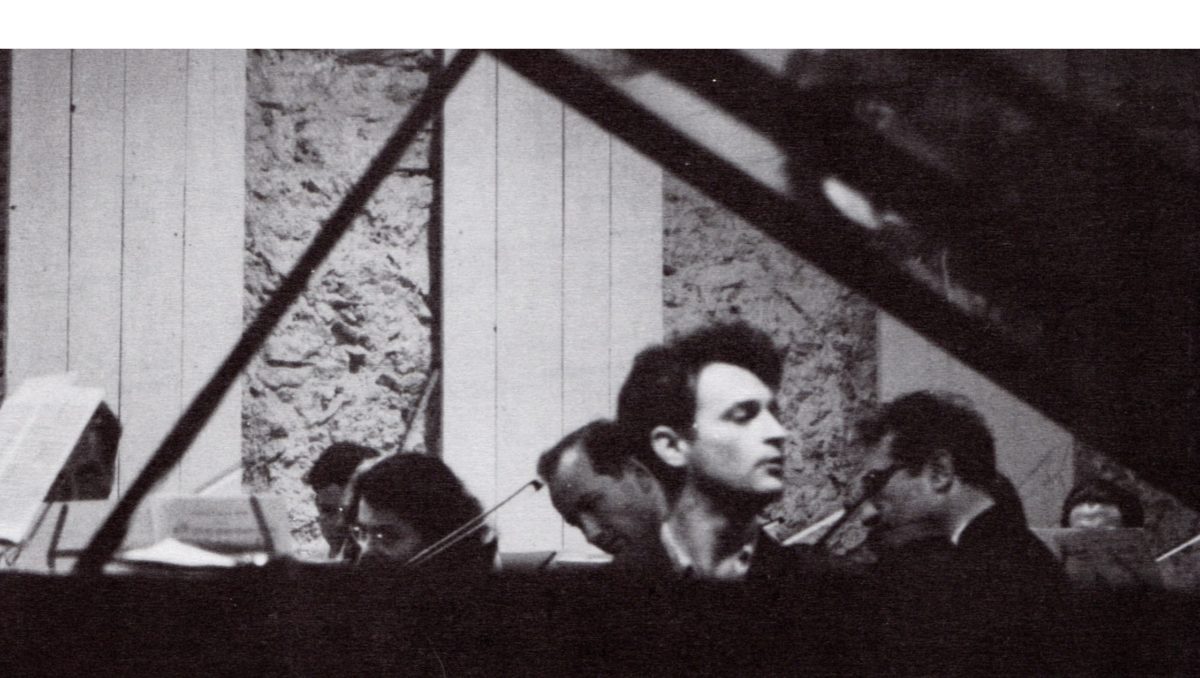
William Kapell – Dimitri Mitropoulos NYPO
Carnegie Hall – April 12 1953
Source: Bande/Tape 19 cm/s / 7.5 ips
La source utilisée jusqu’à présent pour les rééditions de cet enregistrement présente un spectre de fréquences tronqué dans l’aigu, ce qui se traduit par un son quelque peu étouffé qui empêche d’apprécier la splendeur sonore du piano de William Kapell (1922-1953), et aussi de l’orchestre.
La bande recopiée ici est en tout point supérieure et permet de restituer enfin cette grande interprétation que Kapell a donnée pour sa dernière apparition à New York avec un orchestre.

Pour sa dernière saison complète, Kapell a joué à travers les Etats-Unis un ambitieux programme de concertos, avec notamment trois apparitions à New-York, à savoir les 27 et 28 novembre 1952 (avec Dimitri Mitropoulos) pour le Concerto N°17 K. 453 de Mozart qu’il rejouera à Prades l’été suivant sous la direction de Pablo Casals, le 30 décembre 1952 pour le 3ème Concerto de Prokofiev avec le Philadelphia Orchestra (direction Alexander Hilsberg) et enfin les 11 et 12 avril 1953, pour le Concerto n°1 de Brahms, en lieu et place du 3ème Concerto de Prokofiev prévu initialement:

Après le concert du 1er décembre à Dallas avec le Concerto Op.15 de Brahms, le chef Walter Hendl lui a adressé une lettre dans laquelle il écrivait: « I have come to the conclusion that you are the great American pianist » (« J’en suis arrivé à la conclusion que vous êtes le grand pianiste américain »).
Les archives ont conservé des copies annotées des programmes des deux concerts des 11 et 12 avril 1953, et il y a de grandes différences de minutage: le 12, pour le concert radiodiffusé, les premier et deuxième mouvements durent chacun environ une minute de plus.
Nul doute que le pianiste et le chef ont modifié leur approche, probablement lors de la répétition pour le concert du dimanche, qui n’a pas le même programme que le précédent.
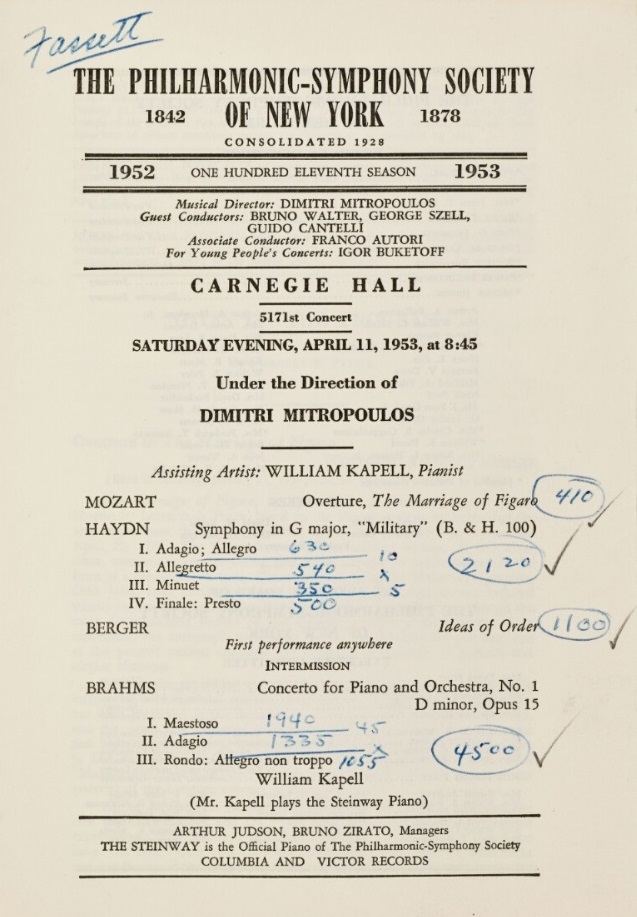

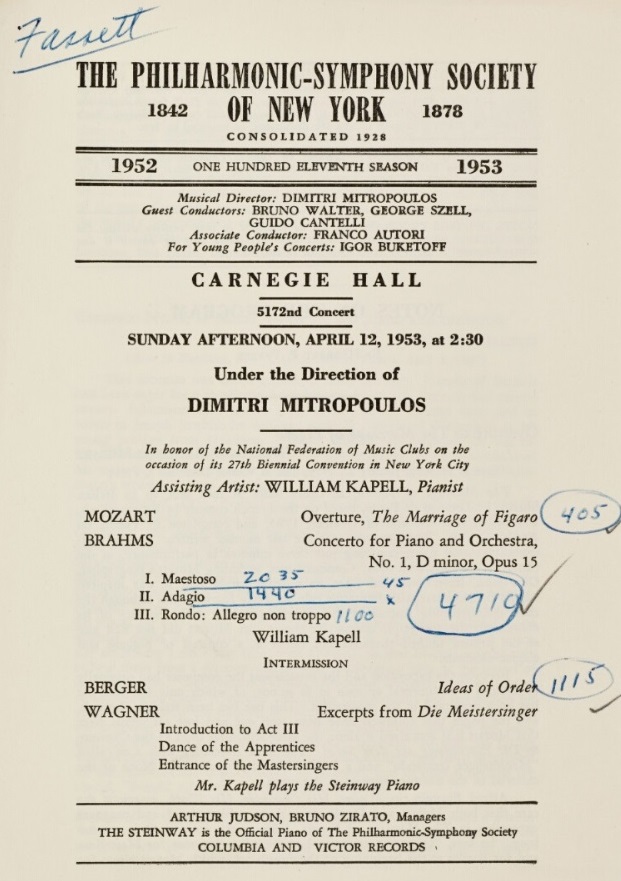
Bien sûr, un minutage différent n’est qu’une vague indication, mais fort heureusement, Harriett Johnson, critique du New York Post a assisté aux deux concerts et nous donne ainsi de précieux commentaires. Ainsi, lors du deuxième concert, l’interprétation était selon elle beaucoup plus détendue et de ce fait beaucoup plus éloquente. Dans ce contexte, elle pointe une tendance du pianiste à se laisser entraîner par sa propre intensité, d’où un excès de tension, une virtuosité trop marquée et une sonorité métallique. L’interprétation de l’Adagio est notée pour son intensité pénétrante, sa vitalité rayonnante et la beauté du phrasé. L’article du Musical Courier (May 1, 1953) va dans le même sens en soulignant, en ce qui concerne le premier concert, la chaleur rhapsodique de l’interprétation, mais aussi le tempo très rapide du premier mouvement, la grande virtuosité et un côté parfois plutôt percussif du jeu du pianiste.
Quoiqu’il en soit, avec ce concert radiodiffusé, nous disposons de la meilleure des deux prestations des interprètes, soliste et chef.
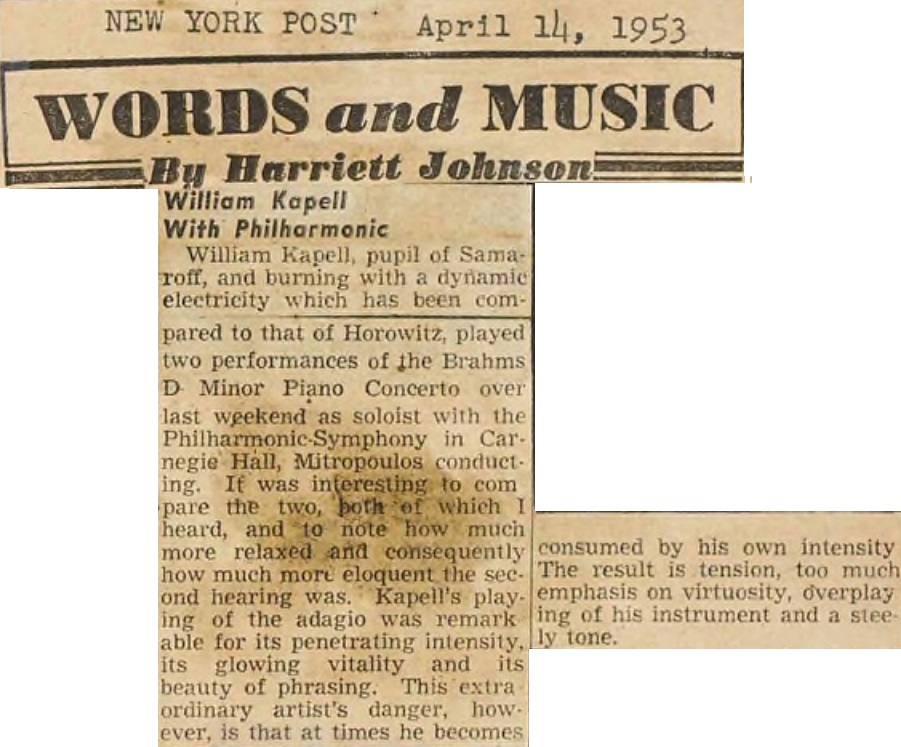

Musical Courier May 1, 1953 (critique du concert du 11 avril)
________________
The source that was used for the previous re-issues of this recording is truncated in the high frequencies, so that the sound is somewhat muffled which does not allow to appreciate the splendid piano sound of William Kapell (1922-1953), and also the orchestra.
The tape dubbed here is vastly superior and fully allows to hear the great performance given by Kapell for his last orchestral concert in New-York.
Fot his last complete season, Kapell performed through the United States an ambitious program of concertos, with no less than three programs in New York, namely on November 27 and 28, 1952 (with Dimitri Mitropoulos) for Mozart’s Concerto N°17 K. 453 he would later perform at the Prades Festival the following summer under the direction of Pablo Casals, on December 30, 1952 for Prokofiev’s Third Concerto with the Philadelphia Orchestra (conducted by Alexander Hilsberg) and to end with, on April 11 and 12, 1953 for Brahms’ First Concerto, instead of the previously scheduled Prokofiev’s Third Concerto.
After the December 1st, concert in Dallas with this Brahms Concerto, the conductor Walter Hendl sent him a letter in which he wrote « I have come to the conclusion that you are the great American pianist ».
The archives have kept annotated copies of the programs of both concerts of April 11 and 12, 1953, and there are major differences in timings: on the 12th, for the broadcast concert, each of the first and the second movements lasts about one full minute longer.
It is clear that both pianist and conductor have reconsidered their approach, probably during the rehearsal for the Sunday concert, whose program is different.
A different timing is of course merely a vague indication, but quite happily, Harriett Johnson, critic for the New York Post attended both concerts and provides us with precious comments. Indeed, at the second concert, the performance was for her much more relaxed and consequently much more eloquent. In this context, she points out the pianist’s tendency toward becoming consumed by his own intensity, the result being tension, too much emphasis on virtuosity, overplaying of the instrument and a steely tone. According to her, the performance of the Adagio was remarkable for its penetrating intensity, its glowing vitality and its beauty of phrasing. The article in the Musical Courier (May 1, 1953) goes in the same direction. It underlines, as far as the first concert is concerned, the rhapsodic warmth of the performance, but also the very fast tempo of the first movement, and the pianist’s great virtuosity and his sometimes rather percussive touch.
Be it as it may, with this broadcast concert, we have the best of the two performances, both for the soloist and the conductor.
Les liens de téléchargement sont dans le premier commentaire. The download links are in the first comment.

Northrop Auditorium – 6 décembre 1941
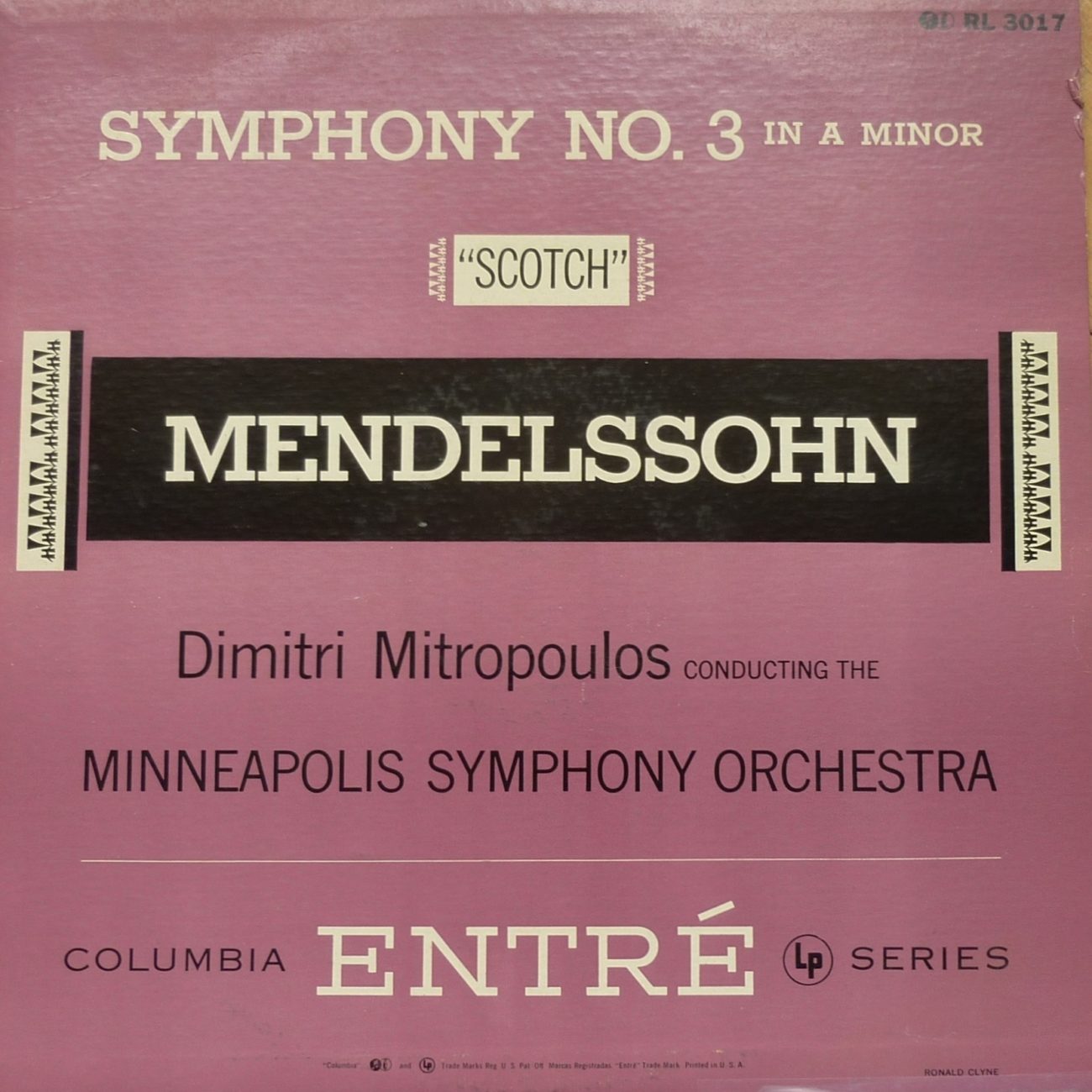
Sous la direction de Mitropoulos, nous disposons de cinq enregistrements de cette Symphonie « Ecossaise » avec quatre orchestres différents. Celui-ci est le plus ancien. Les deux suivants sont avec le New-York Philharmonic (concert du 1er novembre 1953 et enregistrement Columbia le lendemain). On connaît enfin deux captations de 1960, celle qui ouvrait le concert donné le 21 août au Festival de Salzbourg avec les Berliner Philharmoniker et celle du 24 octobre à Cologne avec le Kölner-Rundfunk Orchester.
Le présent enregistrement est un des meilleurs réalisés à Minneapolis. L’interprétation est passionnante et la prise de son (microsillon Columbia Entré RL-3017) est de fort bonne qualité, nonobstant l’acoustique de la salle, sans les problèmes de compression de dynamique rencontrés par ailleurs, notamment dans la Symphonie de Franck.


We have five recordings of this « Scotch » Symphony conducted by Mitropoulos with four different orchestras. This one is the oldest. The next two are with the New-York Philharmonic (concert given on November, 1st 1953 and a recording for Columbia the next day). Two performances from 1960 are also known, the one opening the Salzburg Festival concert given on August, 21 with the Berliner Philharmoniker and the one of October 24 in Cologne with the Kölner-Rundfunk Orchester.
The present issue is one of the best from Minneapolis. The performance is thrilling and the recording (Columbia LP Entré RL-3017) is quite good, notwithstanding the acoustics of the Auditorium, without the problems of dynamics compression that mar other recordings, such as with the Franck Symphony.
Les liens de téléchargement sont dans le premier commentaire. The download links are in the first comment.

Enregistré à Brooklyn (St-George Hotel Ballroom) le 11 novembre 1957
Prise de son stéréophonique: Fred Plaut & Stan Tonkel
Source: Bande/Tape 19 cm/s / 7.5 ips LMB 19
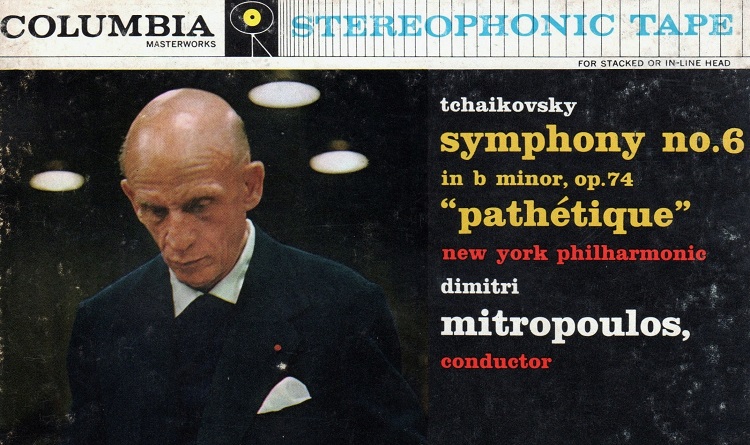
Cet enregistrement a été réalisé au cours d’une journée « marathon » au cours de laquelle, outre cette Symphonie, ont été enregistrés l’Hymne Américain (non publié), de larges extraits (45′) du ballet Roméo et Juliette de Prokofiev, la Marche Slave de Tchaïkovsky et « Une Nuit sur le Mont Chauve » de Moussorgsky, soit en tout environ 100 minutes de musique.
La Symphonie de Tchaïkovsky avait été donnée en concert par Mitropoulos le 12 octobre (étonnamment sa seule exécution de cette œuvre avec le NYPO), et les extraits du ballet de Prokofiev les 31 octobre et 1er novembre, une partie seulement d’entre eux étant repris lors du concert radiodiffusé du dimanche, le 3 novembre.
Cette journée d’enregistrements du lundi 11 novembre était inconfortablement située entre deux semaines de concerts dirigés par André Cluytens les jeudi 7, vendredi 8, samedi 9 et dimanche 10 novembre d’une part , et les jeudi 14, vendredi 15, samedi 16 et dimanche 17 novembre d’autre part avec des programmes complètement différents. Etant donné qu’il y a eu chaque semaine « comme c’était l’usage » (lettre du NYPO à Cluytens en date du 4 décembre 1956) quatre ou cinq répétitions (deux le mardi, une le mercredi, une le jeudi et « si nécessaire » une le samedi) pour préparer les concerts, on imagine aisément la charge de travail que ceci représentait pour l’orchestre, le lundi étant sa seule journée de repos.

Si les critiques américains n’ont pas manqué de louer la qualité exceptionnelle de la prise de son, en particulier pour la version sur bande (2 pistes 19 cm/s ref LMB 19), ils ont par contre été déroutés par l’interprétation dont l’incroyable tension et les couleurs orchestrales ne correspondait pas à leur conception, probablement influencée par le romantisme allemand, qui réclamait plus de « pathos », à une époque où des interprètes tels que Mravinsky n’étaient pas encore la référence.
Autrement dit, Mitropoulos était en avance sur son temps.
Peut-être aussi cette tension reflétait-elle la période difficile que traversait Mitropoulos, contraint de partager pour la saison 1957-1958 la direction de l’orchestre avec Leonard Bernstein. Il démissionnera juste après, la nouvelle étant annoncée par la presse le 20 novembre.
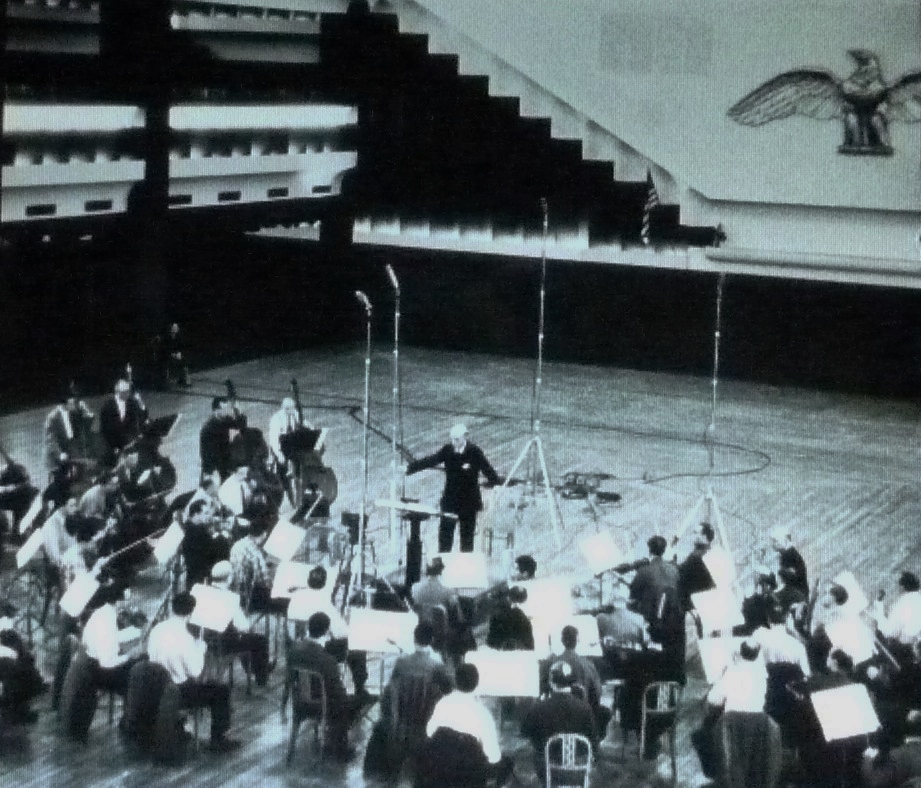
This recording was made during a one-day « marathon » during which, apart from this Symphony, were recorded « The Star Spangled Banner » (still unpublished), a large selection (45′) from Prokofiev’s Ballet Roméo and Juliet, the « Marche Slave » by Tchaïkovsky and « Night on Bald Mountain » by Moussorgsky, all in all about 100 minutes of music.
The Tchaïkovsky Symphony had been performed by Mitropoulos at the October 12 concert (astonishingly his only public performance of this work with the NYPO), and the excerpts from Prokofiev’s Ballet on October 31 and November 1st, only a part thereof being played at the Sunday broadcast of November 3.
But this recording day of Monday November 11 was squeezed between two weeks of November concerts conducted by André Cluytens on Thursday 7, Friday 8, Saturday 9 and Sunday 10 on the one hand, and on Thursday 14, Friday 15, Saturday 16 and Sunday 17 on the other hand with entirely different programs. Since there were each week as « customary » (letter from NYPO to Cluytens, dated December 4, 1956) four or five rehearsals (two on Tuesday, one on Wednesday, one on Thursday, and « whenever necessary » one on Saturday) to prepare the concerts, one can easily imagine the gruelling schedule this meant for the orchestra for which Monday was the only day-off.
The US critics did not fail to recognize the exceptionnal quality of the recording, especially in the reel-to-reel tape version (2 tracks 7.5 ips ref LMB 19). They seemed however to have been puzzled by the performance of which the incredible tension and the orchestral colours did not meet with their idea of the work, maybe out of the influence of German romanticism, that needed more « pathos », at a period when performers like Mravinsky were not yet a reference.
In other words, Mitropoulos was ahead of his time.
Maybe said tension reflected the difficult period Mitropoulos was going through, obliged as he was to share for the 1957-1958 season the leadership of the orchestra with Leonard Bernstein. He resigned shortly afterwards, and the news was announced in the press on November 20.
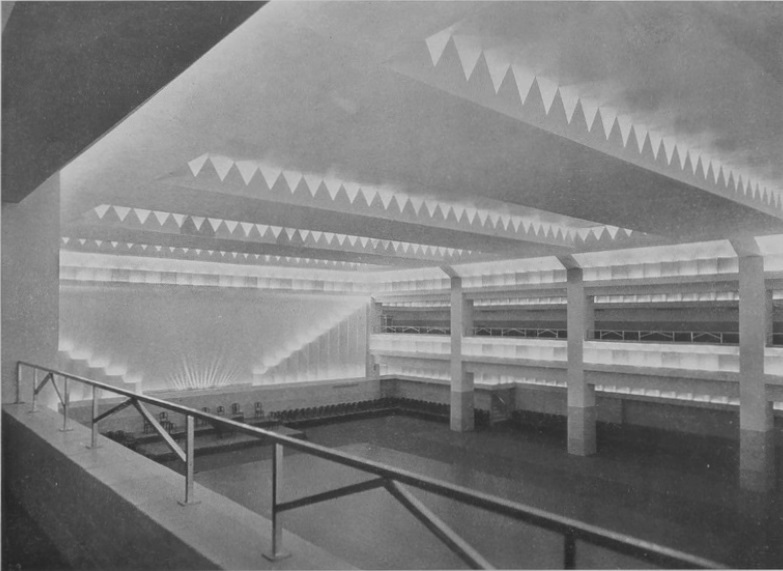
St. George Hotel Ballroom

Mitropoulos – I – Franck Symphonie en ré mineur
Minneapolis Symphony Orchestra
Northrop Auditorium – 8 Janvier & 26 Novembre 1940
On a du mal à croire que ce soit le premier enregistrement du chef Dimitri Mitropoulos (1896 – 1960), et pourtant, c’est le cas. Bien qu’elle soit son seul enregistrement répertorié de cette œuvre, cette grande interprétation est devenue une rareté discographique.
Au cours des années 1940, Mitropoulos a réalisé avec cet orchestre dont il a été le chef titulaire de 1937 à 1949 beaucoup de précieux disques pour Columbia (la grande majorité des enregistrements) et ensuite RCA.
Avec le concours de l’orchestre, le petit label américain Nickson Records (Rochester – NY) en a réédité sur CD la quasi-totalité, mais ces disques qui datent du milieu des années 1990 sont maintenant quasi-introuvables.
Le peu d’empressement de Columbia à rééditer ces enregistrements en CD s’explique en partie par leur qualité technique problématique. Le Northrop Auditorium était à l’époque (elle a été entièrement refaite en 2011 avec une jauge plus raisonnable de 2700 places) une très grande salle de 4800 places à l’acoustique que l’on pourrait qualifier de « caverneuse », et en tout cas inadaptée aux prises de son de qualité. A ceci s’est ajouté que Columbia n’a pas dépêché sur place ses meilleures équipes de prise de son, ni le meilleur matériel. Et enfin, pour des raisons de coût, les 78 tours ont été pressés avec une pâte de qualité inférieure. Ceci est expliqué en détail dans le livre de William R. Trotter (Priest of Music – The Life of Dimitri Mitropoulos).
Toutefois, les éditions en microsillon ont permis, à partir des matrices d’origine, d’améliorer notablement la qualité sonore par rapport aux éditions en 78 tours. Si le son reste compact, avec des saturations et de la compression de dynamique, il s’avère toutefois d’une lisiblité satisfaisante.
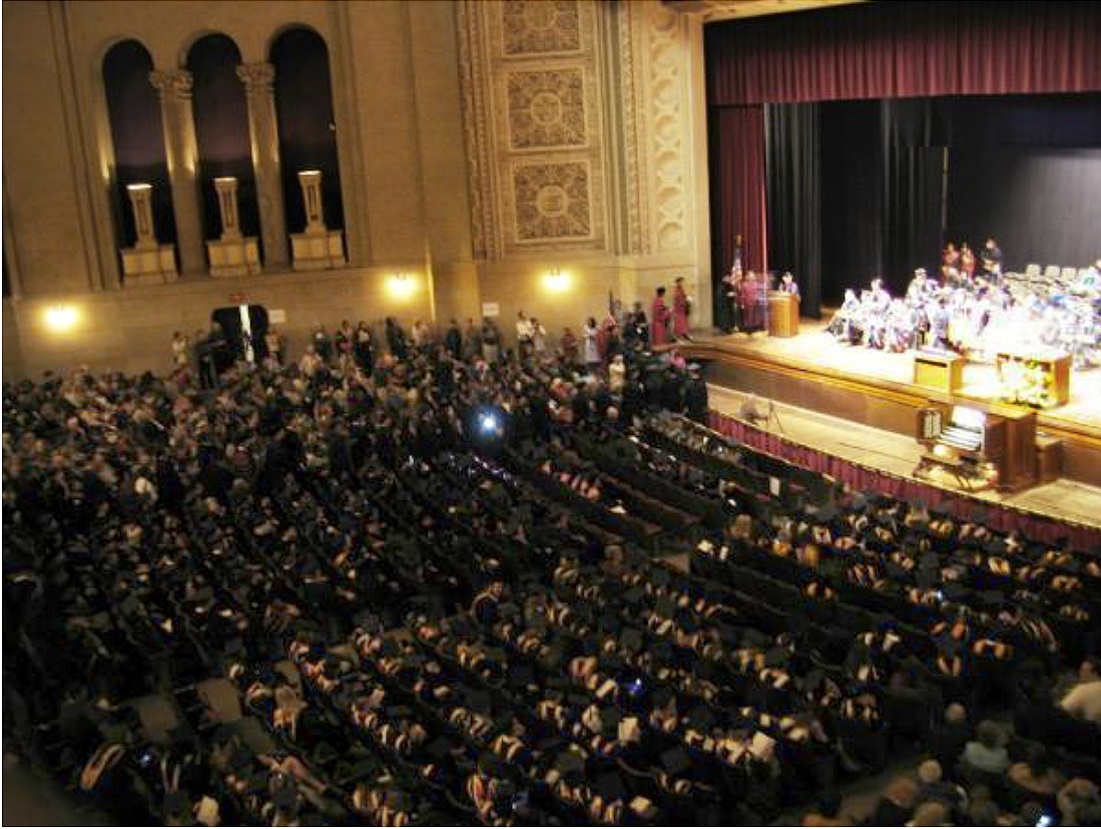

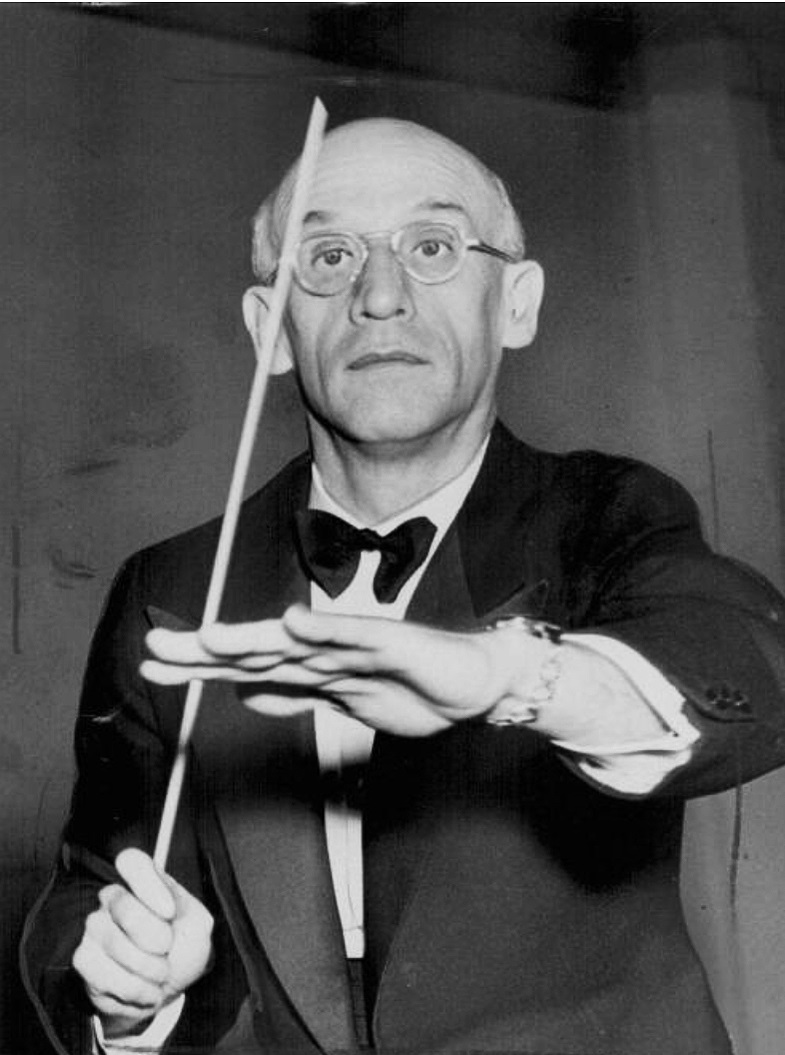
Mitropoulos – I – Franck Symphonie en D minor
Minneapolis Symphony Orchestra
Northrop Auditorium – Jan, 8 & Nov, 26 1940
It may be hard to believe, but it is indeed the first recording made by Dimitri Mitropoulos (1896-1960). This great performance has become a discographic rarity, although it is his only known recording of the work.
During the 40s, Mitropoulos made many precious recordings with this orchestra of which he was the principal conductor between 1937 and 1949, namely for Columbia (the great majority of these) and then RCA.
With the help of the orchestra, the small US label Nickson Records (Rochester – NY) re-issued almost all of them on CDs, but these discs which date back to the mid-90s are very difficult to find.
Columbia’s lack of enthusiasm for CD re-issues of these recordings can be partly explained by their questionable technical quality. Northrop Auditorium was then (it has been enrirely rebuilt in 2011 with a more reasonable capacity of 2,700 seats) a very large 4,800 seat venue with rather « hollow » acoustics, and anyway unsuitable for high quality recordings. Moreover, Columbia sent there neither its best recording teams, nor its best recording equipment. Even more, to cut production costs, the 78s pressings were made with sub-standard shellac. This is explained at length in William R. Trotter’s book (Priest of Music – The Life of Dimitri Mitropoulos).
Be it as it may, the LP editions produced from the original matrixes have a much better sound quality than the 78rpm editions. The sound may still be compact with saturation and dynamics compression, but at least it is audibly satisfactory.
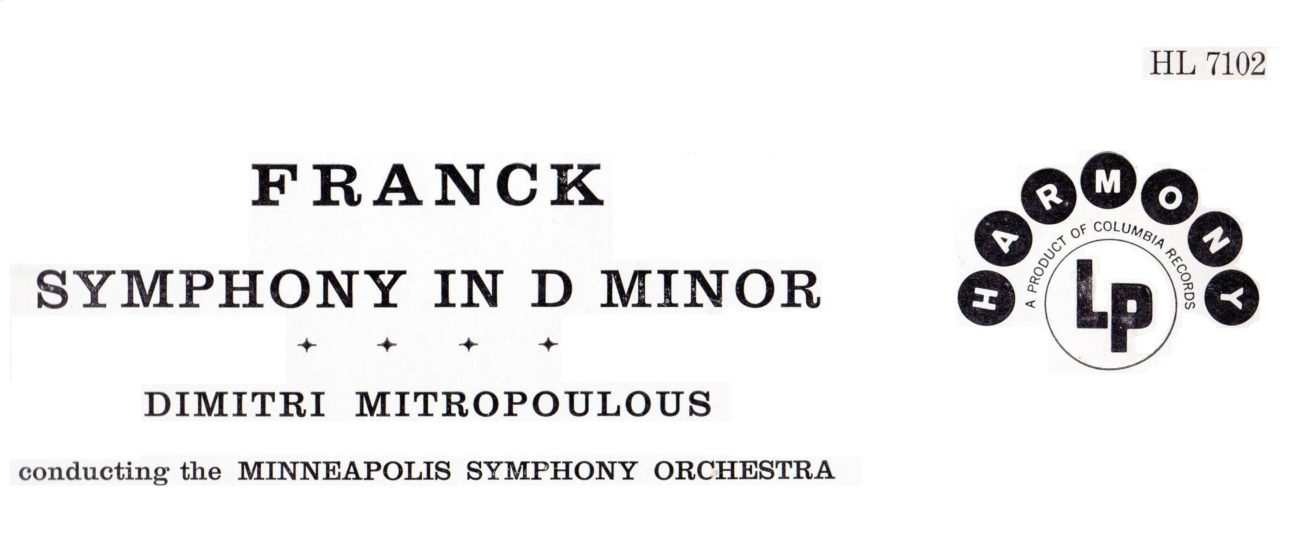
Les liens de téléchargement sont dans le premier commentaire. The download links are in the first comment



